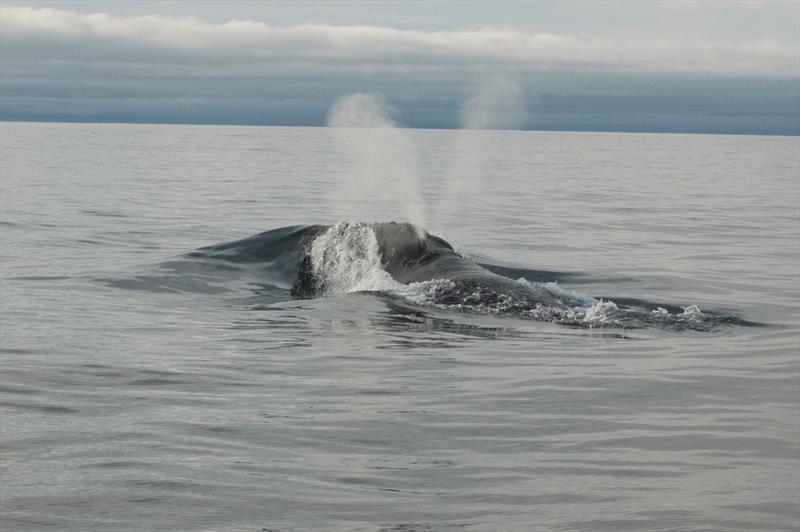
First recording of North Pacific whale song
by NOAA Fisheries 24 Jun 2019 15:29 UTC

An eastern North Pacific right whale, the world's most endangered great whale. V-shaped exhale is unique to right whales © NOAA Fisheries
Right whales don't sing — or do they?
Unlike some of their famously musical relatives, right whales are known to restrict their vocalizations to individual calls rather than the patterned phrasing that is singing. This has been well documented for Southern and North Atlantic right whales.
But new findings suggest that the rarest whale of them all, the eastern North Pacific right whale, is breaking into song.
"During a summer field survey in 2010, we started hearing a weird pattern of sounds," explains Jessica Crance, Marine Mammal Laboratory, NOAA Fisheries' Alaska Fisheries Science Center. "We thought it might be a right whale, but we didn't get visual confirmation. So we started going back through our long-term data from moored acoustic recorders and saw these repeating patterns of gunshot calls. I thought these patterns look like song. We found them again and again, over multiple years and locations, and they have remained remarkably consistent over eight years."
Gunshot calls are part of the right whale's known repertoire, along with upcalls, screams, and warbles. But they had never before been heard as part of a repeating pattern.
While Crance's team suspected that the songs were produced by a right whale, they had only the acoustic recordings, with no visual confirmation—until two summers ago.
"We heard these same songs during a summer survey in 2017, and were able to localize the songs to male right whales," says Crance. "We can now definitively say these are right whales, which is so exciting because this hasn't been heard yet in any other right whale population."
North Pacific right whale song recordings
- Song Recording 1 GS2-TP (see spectrogram below)
- Song Recording 2 GS3-PU (Listen carefully in the beginning to hear the faint growling sound and progression of calls)
New findings give rise to new questions
"Why is this population of right whales singing? Do the other populations also sing, and it just hasn't been documented yet, or is this unique to our population?" asks Crance. "Working in the very remote, harsh, and large Bering Sea, getting the answers will be very difficult. That is one of our biggest challenges—our population has fewer than 30 whales."
Crance speculates that these songs are a reproductive display. "We have direct evidence of male right whales singing, and we think this may be exclusive to males, but we have very limited data on vocalizing female right whales."
As to why North Pacific right whales sing, Crance theorizes that their extreme rarity gives them reason to sing.
"With only 30 animals, finding a mate must be difficult. Lone male right whales tend to gunshot more frequently than females. Perhaps the 2:1 male ratio in the North Pacific has led to our males singing to attract females. But we may never be able to test that or know for sure."
"Our next step will be to look at the evolution of the songs over time, and their seasonality, to determine if certain songs are produced at specific times. We also want to find out whether these songs contain individual-specific information," says Crance. "There is so much I would love to know."
Additional Resources